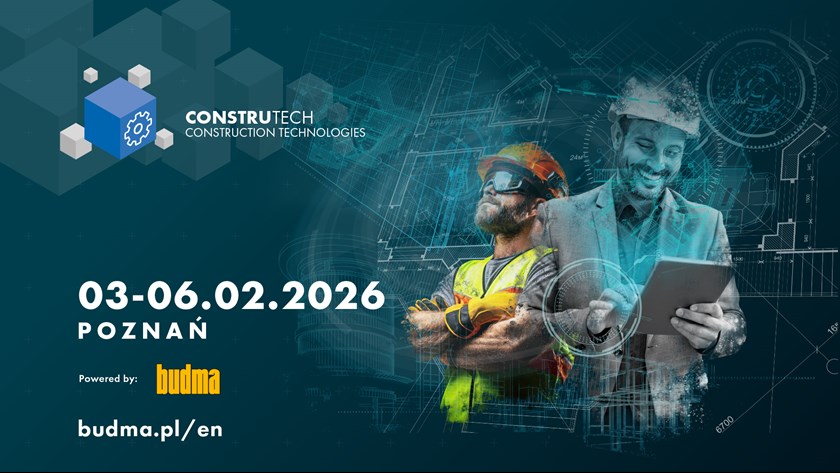CONSTRUTECH – Construction Technologies
CONSTRUTECH - Construction technologies that distinguish several key trends that dominate modern architecture.

CONSTRUTECH - Construction technologies highlighting several key trends that dominate modern architecture.
The salon will showcase:
- walls, ceilings, facades
- construction chemistry
- insulation systems, insulations
- design and IT in construction
- soil work and foundations (including design and geotechnical studies)
Walls
Glazing, concrete, prefabricated walls and green walls are becoming increasingly popular. Glazings - large, panoramic windows - are becoming increasingly popular, as they allow for maximum light in interiors. They are often incorporated into the facade, connecting the interior with the exterior. Concrete is characterized by a minimalist style and austerity. It is gaining popularity in modern architecture. It is often used on both exterior walls and interiors. More and more projects are using prefabricated panels as walls, which speeds up the construction process and reduces costs. Green walls, on the other hand, show a desire to integrate nature into living spaces, which is reflected in walls that act as plant gardens.
Ceilings
Open-space ones are gaining in popularity: In modern designs, partition walls are often abandoned and ceilings are used in an open way, giving a sense of spaciousness. Concrete or steel ceilings are also often used to create larger spaces. Suspended ceilings, on the other hand, are popular in offices or modern apartments. They make it possible to hide installations (such as lighting, air conditioning and wiring). Natural wood in ceilings and floors is becoming more frequently used in modern designs, especially in combination with minimalist design.
Facades of modern buildings are very often simple and minimalist, without unnecessary ornamentation, with an emphasis on simple geometry and noble materials. Glass is increasingly used as the main facade material. Buildings with large glazings offer a better connection with the environment, natural light, and at the same time can look very elegant. Modern buildings often use wood, stone, brick, as well as modern composite materials. Wood combined with metal or concrete creates a contrast that is characteristic of modern designs. Ventilated facades - allow natural air circulation between the facade and insulation, which improves the energy efficiency of the building.
The ecological and energy-saving trends include photovoltaic facades, which allow the acquisition of renewable energy without installing separate panels. Modern ceilings, walls and facades are characterized by excellent thermal insulation, which helps reduce building operating costs. In addition to vegetated walls, vegetated roofs are also becoming popular in modern buildings, which improve the building's energy balance and have a beneficial effect on the microclimate.
Design and IT in construction is a topic that has become increasingly important in recent years, as digital technologies begin to play a key role in design, construction and project management processes. These include technologies such as building information modeling, such as the 3D model, whose features include an integrated approach to design, cost and time optimization, as well as simulation and analysis capabilities. Another technology is computer-aided design, which is used to create detailed technical drawings and documentation. Drones are another design-assist, monitoring, documenting device. IoT (Internet of Things) technology - smart buildings, structural monitoring or asset management - is also a modern technology in the service of design. Various types of software or artificial intelligence and data analysis are also available.





